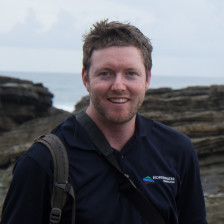
Team inspecting a gravity-fed water system and spring protection area
Rwanda is a small and beautiful country in central Africa teeming with mountains, minerals, terraced agricultural hillsides, large lakes and wildlife. The first thing that comes to mind when one thinks about Rwanda may be their silverback mountain gorillas, the genocide of 1994, or both perhaps. Having worked in neighboring countries around Rwanda, I was intrigued and inspired by its economic turnaround, especially after joining the Commonwealth.
In 2013, I finally found myself in Rwanda, working for an organization investing millions of dollars towards water supply infrastructure throughout the rural Rulindo district in the Northern Province. My company was tasked to evaluate the results and effectiveness of the investments already made and help guide the direction of future investments. We were also observing the geology of the district to understand the possibilities of developing groundwater supplies. The Rulindo Challenge, as it came to be defined, is an initiative between the Rwandan Government, Water for People, Charity:Water and philanthropic organizations with a goal to provide 285,000 people in 494 villages with safe and reliable water service. To achieve this goal, each home must have access to water within 500 meters.
We were welcomed in Kigali, a bustling capital city with great restaurants, reliable power and water supply, friendly people– and what I must say is the cleanest city I have ever visited. The Kigalians are proud of this asset; in fact, my colleague Dave Holland had to negotiate keeping the plastic wrap protecting his rolled up maps as we left the airport. The locals were worried about the plastic making its way to an undesirable location. Little did they know, Dave is one of those people that picks up trash as he walks down the streets of his hometown of Rapid City, South Dakota.
The rugged Precambrian landscape in the Rulindo district is mountainous, steep, and remote. Villagers often seem to pop out from thin air, carrying infants, water jugs, machetes or crops, and always with wide, happy smiles. Rwanda is, after all, the land of a thousand hills and a thousand smiles. Elaborate memorial structures with fresh flowers are scattered throughout the countryside and are a constant reminder of the genocide, and the families and villages that were changed forever. We avoided bringing it up ourselves, but it proved to be an unavoidable topic of conversation.
Nearly all of the villages and population centers in Rulindo are situated on ridges and hilltops where the main roads and electrical lines are located. The available water resources are primarily springs seeping from quartzite fractures, which are hundreds of meters lower in the valleys and far from the population centers.
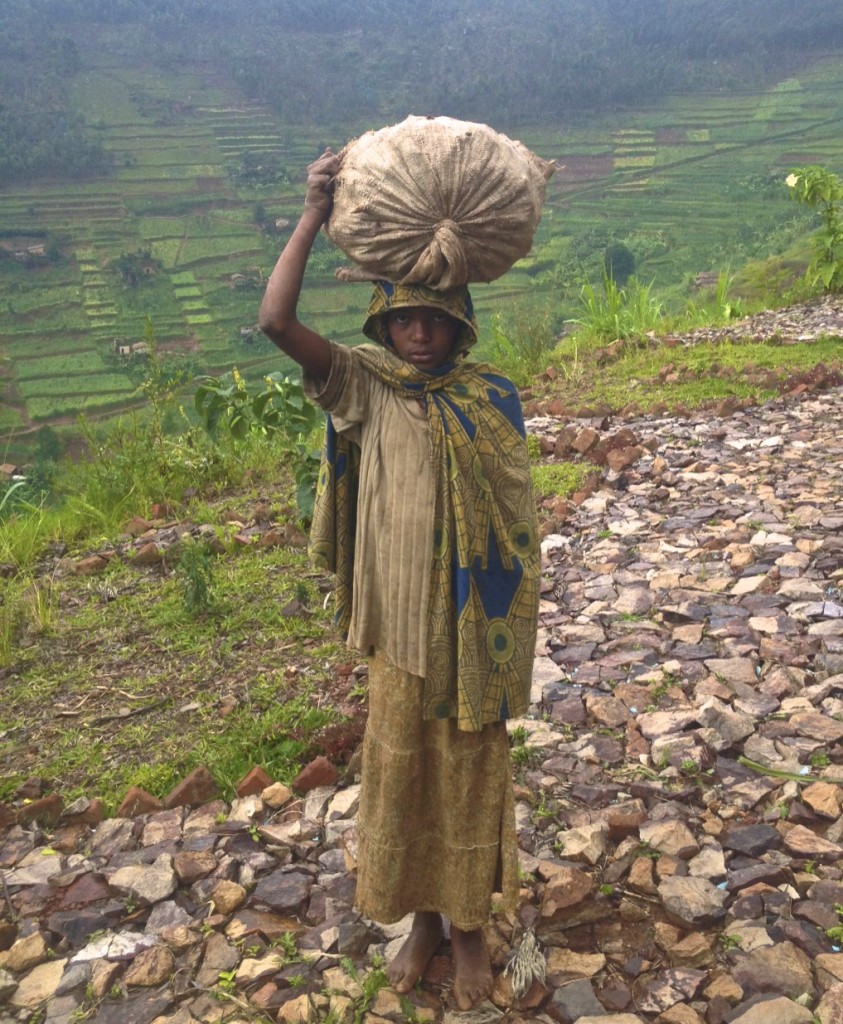
Young lady carrying food home
The challenge of providing a sustainable water supply to every resident definitely lives up to its definition, especially considering the rugged terrain, high costs associated with pumping water, plus the low income and modest economic activity. A sustainable water supply is managed by the communities or contracted operators, and needs to generate revenue, enabling repairs, system replacement costs and profits. A self-sustaining water system is necessary to continue making capital investments in new systems.
For several days we toured the countryside, evaluating the water systems that have been constructed thus far, the sources of water, the water mains, pumping stations, distribution networks, public tap stands and private connections. Currently, all of the water systems are supplied by springs and none from wells. The groundwater potential in the district is significant and largely unexplored and uncharacterized. The springs hint at the Precambrian crystalline aquifers that are currently out of sight and out of mind. Our observations were met with reserved excitement, groundwater is not well understood in the district and its development has traditionally been avoided as a result.
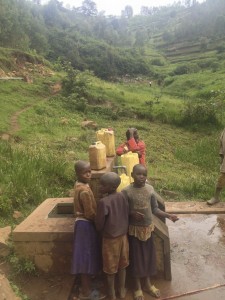
Children collect water from a tap stand in the mountains that is fed by gravity from a nearby spring
We were excited to see water systems working effectively, the communities happy with their access to water and the affordability. Behind this success is a private-public partnership model that the Rwandan government piloted and has since evolved. Three separate private operator companies were awarded contracts to operate and maintain the first systems that were constructed. There were challenges, as some systems were more expensive to operate than others, maintenance costs were higher than anticipated and it was difficult to keep water tariffs low enough to generate the necessary revenue. The high operation costs due to the pumping combined with the sensitive price points of a developing nation were leading towards a failed investment.
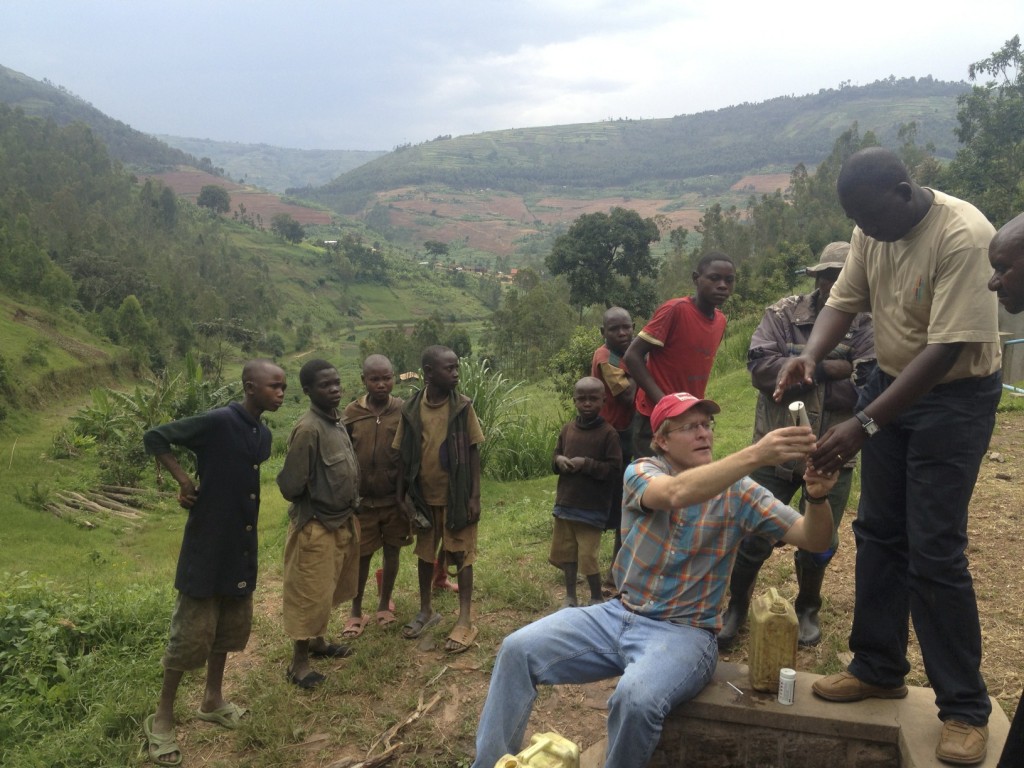
Engineer, Dave Holland teaching locals to test water quality
The private operator companies realized they needed to act quickly to make a change. They met and presumably after a few Mützig lagers, decided a merger would present significant advantages. The merger solved a host of issues– the main issue was resolved by setting the water tariffs on all systems combined, making water more affordable and increasing usage, thus increasing revenue. They would then only require one office and depot instead of three, less staff and fewer service trucks. The Rwandan Government approved the merger and the company instantly became successful and profitable.
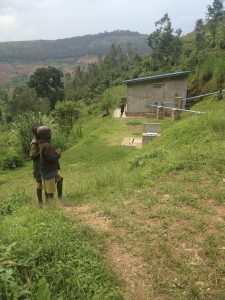
A diesel generator powered pumping station to pump water uphill to the communities
We were pleasantly surprised and inspired by the success of the rural water model that has developed in Rwanda. Despite this success, we encourage and challenge the program to excel further and imagine the future possibilities of an available water supply and service beyond basic access. After all, there is an outstanding success to build upon, an opportunity to achieve higher returns on investments and continue to transform the health, quality of life and economy of the Rulindo district.
We hope that Rwanda can continue advancing its water sector and contribute at the international level to support other developing nations that are incredibly far behind.
